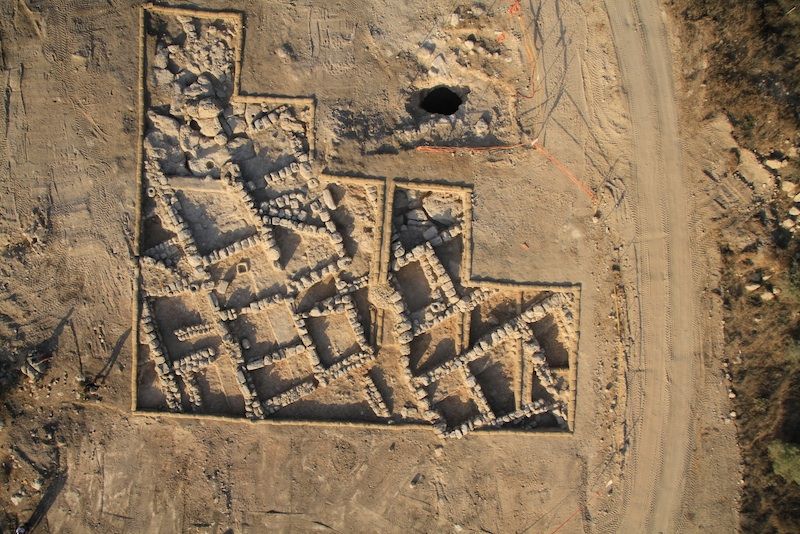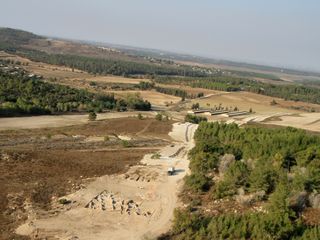Ancient Rural Town Uncovered in Israel

On the outskirts of Jerusalem, archaeologists have discovered the remains of a 2,300-year-old rural village that dates back to the Second Temple period, the Israel Antiquities Authority (IAA) announced.
Trenches covering some 8,000 square feet (750 square meters) revealed narrow alleys and a few single-family stone houses, each containing several rooms and an open courtyard. Among the ruins, archaeologists also found dozens of coins, cooking pots, milling tools and jars for storing oil and wine.
"The rooms generally served as residential and storage rooms, while domestic tasks were carried out in the courtyards," Irina Zilberbod, the excavation director for the IAA, explained in a statement. [The Holy Land: 7 Amazing Archaeological Finds]

Archaeologists don't know what the town would have been called in ancient times, but it sits near the legendary Burma Road, a route that allowed supplies and food to flow into Jerusalem during the 1948 Arab-Israeli War. The rural village located on a ridge with a clear view of the surrounding countryside, and people inhabiting the region during the Second Temple period likely cultivated orchards and vineyards to make a living, IAA officials said.
The Second Temple period (538 B.C. to A.D. 70) refers to the lifetime of the Jewish temple that was built on Jerusalem's Temple Mount to replace the First Temple after it was destroyed. Archaeological evidence suggests this provincial village hit its peak during the third century B.C., when Judea was under the control of the Seleucid monarchy after the breakup of Alexander the Great's empire. Residents seem to have abandoned the town at the end of the Hasmonean dynasty — when Herod the Great came into power in 37 B.C. — perhaps to chase better job opportunities in the city amid an economic downturn.
"The phenomenon of villages and farms being abandoned at the end of the Hasmonean dynasty or the beginning of Herod the Great's succeeding rule is one that we are familiar with from many rural sites in Judea," archaeologist Yuval Baruch explained in a statement. "And it may be related to Herod's massive building projects in Jerusalem, particularly the construction of the Temple Mount, and the mass migration of villagers to the capital to work on these projects."
The discovery was made during a salvage excavation ahead of a construction project that began last year; a 21-mile-long (35 kilometers) gas pipeline was supposed to run through the site, but engineering plans were revised to go around the ruins, IAA officials said. Salvage excavations are common in Israel to avoid building over ancient sites. For instance, remarkably well-preserved Byzantine church mosaics were recently revealed ahead of the construction of a park, and an ancient Roman road connecting Jerusalem to Jaffa was uncovered ahead of the installation of a drainage pipe.
Sign up for the Live Science daily newsletter now
Get the world’s most fascinating discoveries delivered straight to your inbox.
Follow Megan Gannon on Twitter and Google+. Follow us @livescience, Facebook & Google+. Original article on LiveScience.











